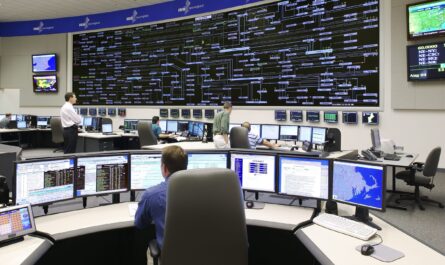Scrubber systems, also known as flue-gas desulfurization (FGD) systems, are air pollution control devices that remove sulfur dioxide and other pollutants from exhaust gases produced by coal-fired power plants and other industrial facilities like marine vessels. Scrubbers use different methods like spraying limestone slurry or seawater to trap pollutants from smokestacks and flue gases before they are released into the atmosphere. There are mainly three types of scrubber systems used based on the method of pollutant removal – wet, dry and semi-dry scrubbers.
Working of Wet Scrubbers
Wet Scrubber System are the most commonly used type of scrubber systems installed in coal-fired power plants and industries. In wet scrubbers, the polluted flue gases pass through a tower filled with limestone slurry droplets or water droplets. The sulphur dioxide present in the flue gases reacts with the limestone slurry and converts into gypsum, a commercially useful by-product. The particulates present are also captured by the water droplets through inertial impaction and interception. The cleaned gas is discharged from the top of the tower while the slurry containing gypsum and other pollutants is collected at the bottom for further processing and safe disposal. Improvements in wet scrubber designs allow sulphur dioxide removal efficiency of over 90%.
Dry and Semi-dry Scrubber Technologies
As the name suggests, dry scrubbers do not use a liquid spray to trap pollutants. Instead, a dry reagent like hydrated lime or sodium bicarbonate is injected and mixed with the flue gases. The pollutants react with the reagent to form solid particles that are easily collected in a particulate control device like a baghouse or electrostatic precipitator. Semi-dry scrubbers use slightly higher moisture than dry scrubbers but much less water compared to wet scrubbers. They offer cost advantages over wet scrubbers with sulphur dioxide removal rates around 70-80%. All scrubber types need conditioning and processing of exhaust gases to meet emission norms.
Application of Scrubbers in Marine Vessels
With more stringent emission regulations enforced by IMO, marine scrubber systems are becoming popular for reduction of sulphur oxide emissions from ships. Open-loop and closed-loop scrubber systems are mainly adopted depending on availability of onboard storage or permitted discharge location. In open-loop scrubbers, seawater is pumped onboard, used to wash exhaust gases thereby removing sulphur oxides and particulates, and then discharged back into the sea. Closed-loop scrubbers recirculate and treat the scrubbing water onboard for disposal on land. Scrubbers allow ships to continue using cheaper high-sulphur fuel oil (HSFO) while meeting the limits for sulphur emissions. This brings significant cost savings for ship owners compared to switching completely to low-sulphur fuel.
Benefits of Scrubber Systems
Scrubber systems help industries and power utilities reduce emissions of particulate matter, sulphur dioxide, hydrochloric acid, mercury and other pollutants from their operations and comply with stringent emission norms. They play a major role in:
– Improving local air quality by capturing up to 90-95% of sulphur dioxide emissions from stacks. This lowers health impacts on nearby communities.
– Protecting the environment as less sulphur dioxide leads to lesser acid rain formation. It also controls emissions of other acid rain causing pollutants.
– Enabling use of cheaper high-sulphur fuels due to scrubbing instead of switching completely to more expensive low-sulphur alternatives. This provides significant operational cost savings.
– Generating useful by-products like gypsum from wet scrubbers which finds applications in wallboard manufacturing, cement production etc. This promotes circular economy.
– Improving public image and reputation of industries by demonstrating commitment to reduce environmental footprint through advanced air pollution control technologies.
Challenges and Future of Scrubber Systems
While scrubbers deliver efficiency in emission control, their installation involves high capital costs. Continuous operation and maintenance requirements also contribute to operating expenses. Ideal siting and design of scrubbers is crucial considering space constraints at plant locations. Scrubbers also generate waste materials like scrubber sludge that needs safe disposal. Further innovations are ongoing to develop more compact, ENERGY-efficient models with modular designs suitable for retrofitting. As emission regulations tighten globally, these systems will play an increasingly important role in transitioning industries to cleaner energy sources while protecting local air quality. Their widespread adoption can significantly curb health and environmental impacts of air pollution.
These systems have emerged as an effective solution for diverse industries to reduce emissions within permitted norms in a cost-effective way. With continued performance improvements and higher penetration, they will support nationwide emission reduction targets and sustainable development goals in the coming decades. Though installation challenges remain, scrubbers offer a viable path to cleaner industrial growth.
*Note:
1. Source: Coherent Market Insights, Public sources, Desk research
2. We have leveraged AI tools to mine information and compile it




